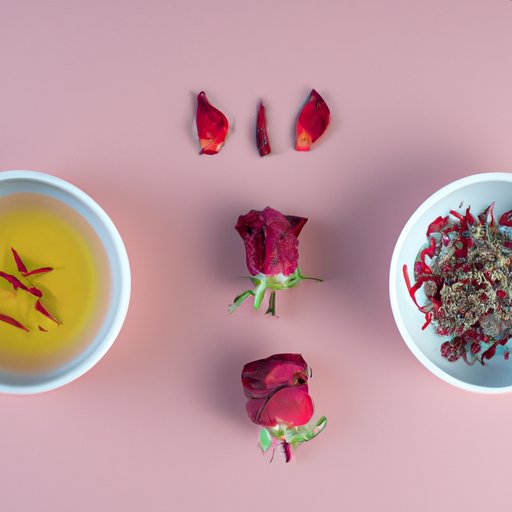
I. Introduction
The color red is one of the most powerful and impactful colors in the visible spectrum. It embodies passion, energy, and danger, and has been used for centuries in art, fashion, and design. However, creating red can be challenging, as it requires an understanding of color theory and the properties of pigments and dyes.
In this article, we will explore the science and art of creating the color red, from understanding the chemical compounds that create red pigments to exploring natural dyes, color mixing techniques, and using red in different contexts. Whether you’re a creative professional, an aspiring artist, or simply someone who loves the color red, you’ll find plenty of useful tips and tricks to incorporate this powerful color into your life.
II. The Science of Creating Red
Understanding the science behind creating red is essential for achieving the desired hue and vibrancy. Red is a primary color, meaning it cannot be created by mixing other colors. Pigments that create red often have unusual properties, making it challenging to create them.
However, there are several chemical compounds that can be used to create red pigments, including iron oxide, cadmium, and alizarin. These compounds interact with light in a way that produces the color red.
When creating red, it’s crucial to understand color theory and how different colors interact with each other. For example, mixing red with green will create a neutral tone, while combining red and yellow produces an orange-red color.
III. Natural Dyes
Natural dyes are an excellent option for creating vibrant red colors without relying on synthetic chemicals. There are several plant sources that can be used to create red dye, including madder root, cochineal, and hibiscus.
To extract these dyes, the plant materials are boiled and steeped in water and sometimes other ingredients, such as vinegar or salt. The fabric or material to be dyed is then boiled in the dye for an extended period to absorb and fix the color.
Natural dyes have many benefits over synthetic alternatives, including being eco-friendly, non-toxic, and often producing unique tones and colors that cannot be replicated with synthetic dyes.
IV. Mixing Red
Color mixing is essential when creating hues and shades of red. Depending on the paints or pigments used, the desired color can be achieved by mixing different ratios of red with other colors.
For example, using magenta and yellow can create a bright red color, while adding black to a mixture of red and blue can create a deep, rich maroon. It’s crucial to use high-quality paints or pigments when mixing colors to achieve the best results.
V. The Power of Red
The color red has a significant psychological impact on people, evoking feelings of passion, energy, and danger. When used strategically, red can enhance the impact of creative projects or marketing materials.
Many successful brands use red as a primary color in their branding and advertising, such as Coca-Cola and Target. The color red has also been used to stimulate appetite, making it a popular choice in the food and beverage industry.
VI. Red in Fashion
The color red has been used in fashion for centuries, from ancient textiles to contemporary fashion design. Various techniques and materials can be used to dye textiles red, such as batik, tie-dye, and natural dyes.
When dying textiles, the type of fabric used affects the final color and vibrancy. For example, silk and wool absorb dye differently than cotton or linen. Understanding the fabric and dye properties are essential for achieving the desired shade of red.
VII. DIY Red
Creating red in a DIY setting can be both fun and rewarding. There are many ways to use natural materials, such as flowers, fruits, and vegetables, to create red dye.
Some common ingredients include beets, pomegranates, and blackberries, which can be boiled and used to dye textiles or other materials. Incorporating red into home decor and landscaping can also add a vibrant pop of color to living spaces.
VIII. Red in the Kitchen
Many red ingredients are commonly used in cooking and baking, such as tomatoes, strawberries, and beets. The key to extracting the most vibrant red color from these ingredients is to understand the science behind cooking and food chemistry.
For example, cooking tomatoes or beets for an extended period will yield a deeper red color. Adding acidic ingredients, such as lemon or vinegar, can also brighten the color of red ingredients.
IX. Conclusion
The color red is both scientifically and artistically fascinating. By understanding its properties and using various techniques such as natural dyes, color mixing, and incorporating it into fashion and home design, it can become a powerful tool for creative expression and communication.
We hope this article has inspired you to experiment with creating red in different contexts and explore the many benefits of incorporating this color into your life.
For further exploration of creating and using the color red, we recommend checking out our additional resources and references below.





